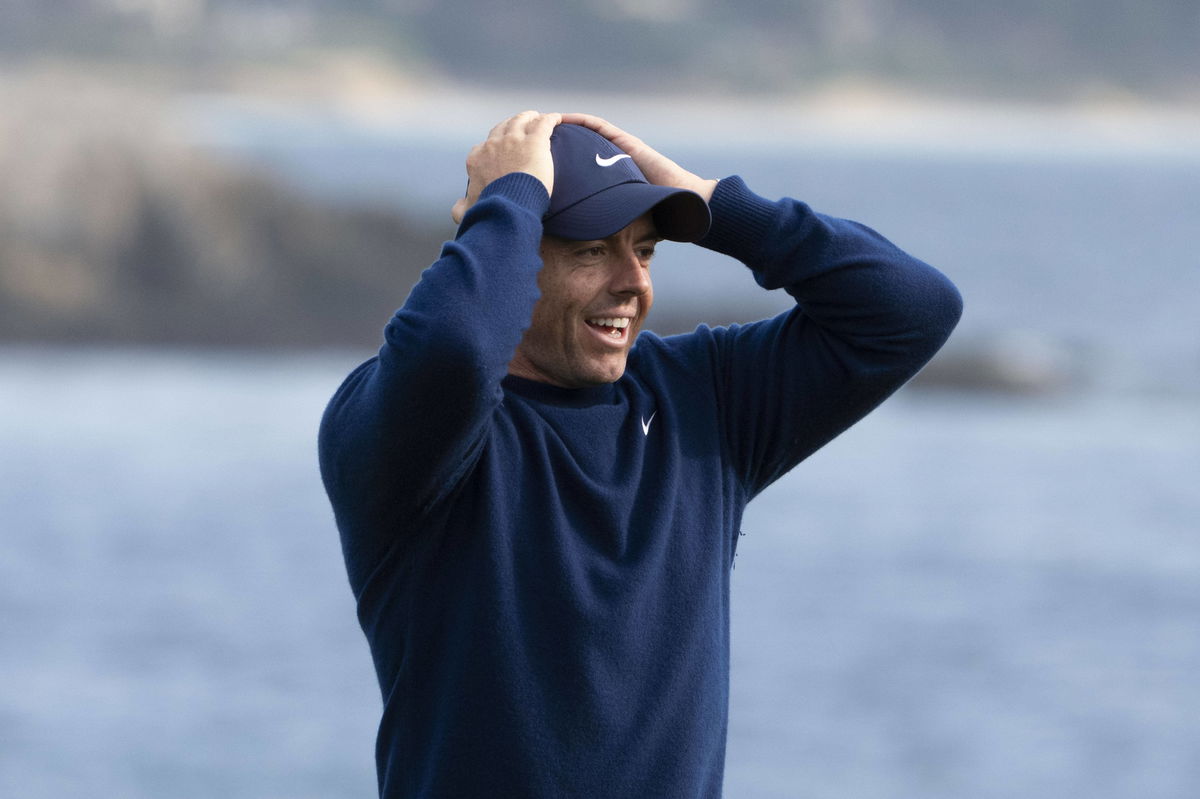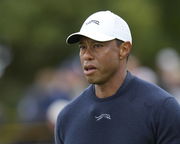
Imago
PGA, Golf Herren AT&T Pebble Beach Pro-Am – Final Round February 2, 2025 Pebble Beach, California, USA Rory McIlroy celebrates winning on the 18th hole during the final round of the AT&T Pebble Beach Pro-Am golf tournament at Pebble Beach Golf Links. Pebble Beach Pebble Beach Golf Links California USA, EDITORIAL USE ONLY PUBLICATIONxINxGERxSUIxAUTxONLY Copyright: xKylexTeradax 20250202_kkt_st3_069

Imago
PGA, Golf Herren AT&T Pebble Beach Pro-Am – Final Round February 2, 2025 Pebble Beach, California, USA Rory McIlroy celebrates winning on the 18th hole during the final round of the AT&T Pebble Beach Pro-Am golf tournament at Pebble Beach Golf Links. Pebble Beach Pebble Beach Golf Links California USA, EDITORIAL USE ONLY PUBLICATIONxINxGERxSUIxAUTxONLY Copyright: xKylexTeradax 20250202_kkt_st3_069
Calamity Corner at Royal Portrush looms as golf’s ultimate test of nerve at The Open 2025. The infamous par-3 16th sits high above a dangerous ravine, exposed to the full force of Atlantic winds. It’s tiny, green, and brutal; carry demand requires absolute precision—anything less, and disaster strikes in an instant. Drama is exactly what Royal Portrush club pro Gary McNeill expects some drama from the 16th, per usual.
Watch What’s Trending Now!
“It is one of the highest holes on the course,” he explains. “The views are spectacular, but the wind is brutal. Even putting becomes tough when the wind picks up, let alone hitting a precise tee shot across the chasm. It is immense and one of the most famous par-3s around,” McNeill said. “There will be some drama there.” His words underline what players already know: Calamity Corner isn’t just scenic; it’s a round-breaker waiting to strike.
“A good lie is pure luck,” said McNeill. “You might get tight turf or thick rough with no control.” Hit it too thin or too hard, and the ball could still roll back into the ravine. “It’s a card-wrecker,” McNeill warned. “A miss right is deadly, but the left side isn’t always friendly either.” Golfers’ experience from 2019 proves that.
ADVERTISEMENT
A whopping 65% of players in 2019 made bogey or worse at Calamity, making it the ultimate scorecard trap. This corner didn’t spare even Portrush’s favorite, Rory McIlroy, during his emotional homecoming. He avoided the ravine but four-putted for a costly double bogey that crushed his chances of making the cut. Meanwhile, newly crowned U.S. Open champion at the time, Gary Woodland, approached the hole with clear caution and smart strategy.
“I think you’ll see a lot of balls going left,” he said. “Right is no fun.” Woodland knew the conditions mattered most: “If the wind is blowing and it’s raining, it’s going to be a brutal hole.” His words rang true; even pros feared the risk, despite Woodland escaping with two steady pars that week. Even so, aiming left is no guarantee of safety, as Shane Lowry nearly found out during his 2019 championship run. He pushed his shot slightly right, but luckily struck what he called his best tee shot of the round. Still, most players aim left to avoid the chasm, though the bailout brings its unpredictable challenges.
View this post on Instagram
ADVERTISEMENT
Historically, the safest route has always been left, away from the chasm that guards the right side mercilessly. Bobby Locke proved it in 1951, choosing the bowl-shaped dip left of the green every single day. That smart strategy earned him four pars and inspired the nickname “Locke’s Hollow” for the bailout zone. Today, most players follow suit, knowing that a shot right risks dropping 40-50 feet into thick, punishing rough. Escaping from there is brutal; only one in ten get up and down, even fewer if you’re an amateur. A missed shot right means a blind recovery from rough onto a slick green, usually ending in bogey or worse.
Calamity Corner is the ultimate equalizer in the field, and here’s why.
ADVERTISEMENT
Top Stories
Tiger Woods Gives Fan 1-Word Reply About PGA Tour Comeback Amid Leaked Schedule

Paige Spiranac Rubs Salt in Colt Knost’s Wounds With Latest Comments on His Amateur Golf Dreams

Watch: Scottie Scheffler Left Stunned as the Ball Betrays Him

Justin Thomas Lays His Feelings Bare About Scottie Scheffler’s Dominant Form Affecting Him

LPGA Legend Drops Upsetting Comeback Update Following 3-Year Hiatus – Report

Why Calamity Corner at Royal Portrush Levels the Field
With a 236-yard carry over a steep ravine and a narrow green that punished even the best in 2019, Calamity demands more than precision. It demands nerve. Only 41% of players hit the green in regulation at the last Open, the worst of any hole. Whether you’re a seasoned major winner or a rising amateur, one misstep here can erase everything, and that’s exactly why this hole might decide The Open 2025.
ADVERTISEMENT
Calamity Corner by the Numbers – The Open 2019
| Hole Number | 16 |
| Par | 3 |
| Yards | 236 (Championship Tees) |
| Green in Regulation% | 41% |
| Birdies Made | 24 (fewest of any hole) |
| Bogey or Worse Rate | 65% |
| Up-and-Down from Ravine | 10% Success Rate |
| Most Common Miss | Left |
| Risk Area | 40-50 ft deep chasm (Right Side) |
| Best Strategy | Aim left-center, avoid the ravine |
Ultimately, even par feels like a win at Calamity Corner—and most players will gladly take it all four days. Shot Scope data shows amateurs average closer to bogey on 75% of par 3s due to missed greens. Not surprisingly, these holes play 0.7 strokes over par, with the 16th at Royal Portrush the hardest of them all. “A three here is gold,” said Gary McNeill. “Players gain shots on the field just by surviving with a par.”
ADVERTISEMENT
ADVERTISEMENT
ADVERTISEMENT

.png?w=50&h=50)
